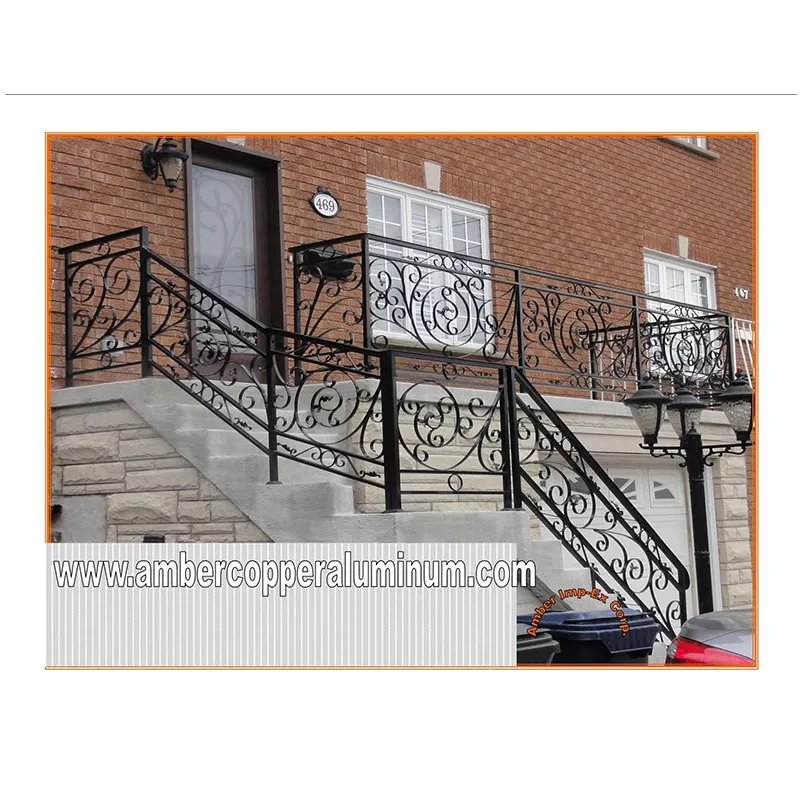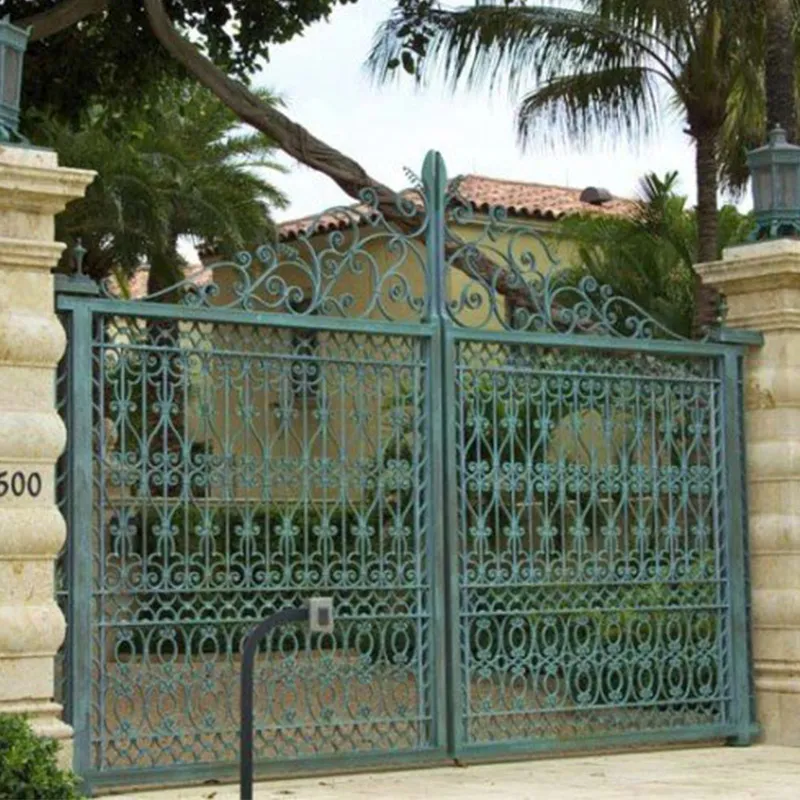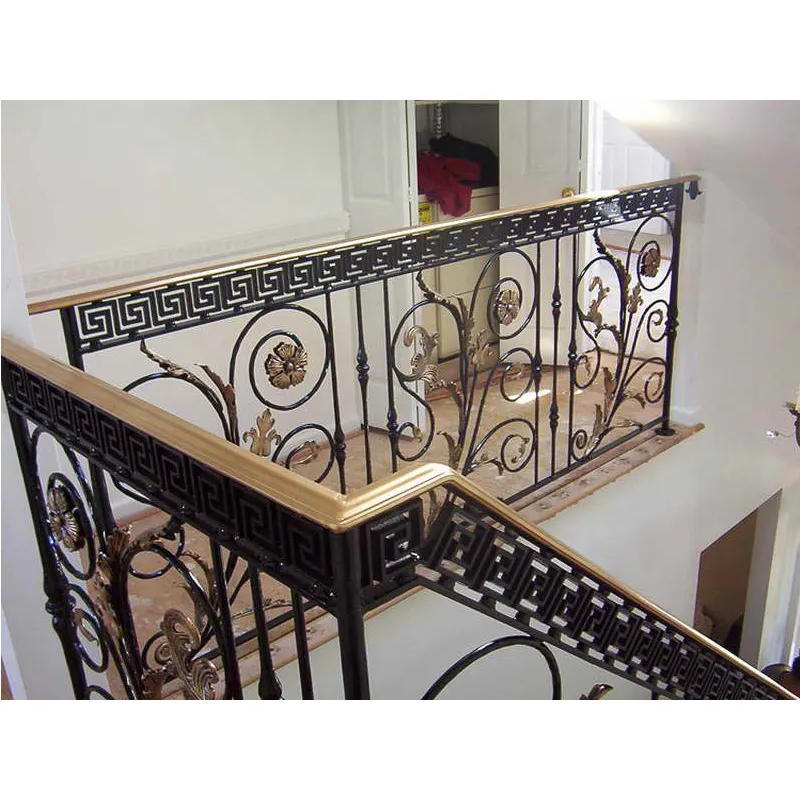
The demand for decorative wrought iron parts is surging across various sectors, from traditional architecture to modern industrial design. According to a 2023 Grand View Research report, the global wrought iron market is projected to grow at a CAGR of 4.8% through 2027, driven by increasing adoption of ornamental railing parts, decorative rod iron pieces, and custom metal fabrication solutions. Technological advancements in casting, forging, and CNC machining are elevating product quality, durability, and design flexibility.

| Attribute | High-end Decorative Wrought Iron Parts | Standard Ornamental Railing Parts | Custom Decorative Rod Iron Pieces |
|---|---|---|---|
| Material | Low Carbon Steel (Q235), Pure Wrought Iron | Mild Steel (Q195) | Alloy Steel / Stainless Steel / Ductile Iron |
| Manufacturing Process | Casting, Hot Forging, CNC Machining | Casting | Forging, Laser CNC, Plasma Cutting |
| Surface Treatment | Hot-dip Galvanized + Powder Coating | Electrostatic Painting | Anodizing, Custom Paint |
| Corrosion Resistance | ISO 9227: ≥720h salt spray | < 400h salt spray | Up to 1500h with custom coating |
| Standards Compliance | ISO 9001, ANSI, ASTM A123 | Local GB/T standards | EN 1090, CE, ISO |
| Design Flexibility | Unlimited Patterns / 3D Customization | Pre-set Patterns | Fully Custom (CNC/Hand-forged) |
| Service Life (Indoor/Outdoor) | 25-50 Years | 8-12 Years | ≥30 Years (with maintenance) |
| Common Applications | Architectural Railings, Fences, Balustrades, Gates | Balcony Railings, Stairs | Landscaping, Historical Restoration |
Modern decorative wrought iron parts rely on a multi-stage manufacturing process, combining century-old craftsmanship with high-precision digital technology to ensure structural strength, intricate design, and corrosion resistance.

- Material Selection – Only certified low-carbon steel, pure wrought iron, or customized alloy are used. All raw materials must meet ISO 9001 and ASTM requirements.
- Forging/Casting – Ornamental elements (scrolls, baskets, leaves, panels) are shaped using open die forging or precision casting. For detailed 3D parts, CNC machining is integrated for ±0.2mm tolerance.
- Assembly & Welding – Components are TIG/MIG welded by certified artisans to ensure seamless joints and structural integrity.
- Surface Finishing – Multi-stage treatments (hot-dip galvanizing, powder coating) are applied. Final finish exceeds ISO 9227 salt spray test for ≥720h corrosion resistance.
- Quality Inspection – All items undergo dimensional checks, weld penetration tests (EN1090, ANSI/AWS D1.1), and visual QC with traceable records.
- Packing & Logistics – Standard export wooden crates and anti-scratch wrapping, certified to withstand ocean shipping.

See a demonstration video of the process.

- Architectural Railings & Balconies: Modern buildings utilize decorative wrought iron parts for both strength and high-end visual appeal, achieving ISO 9001 certified safety standards for public installations.
- Historical Restoration: Ornamental railing parts with precise CNC replication capabilities are indispensable for heritage latticework and stairway refurbishments.
- Industrial & Oil-Gas Chemical Facilities: Durable alloyed decorative rod iron pieces provide anti-corrosion protection in harsh environments, tested to meet ISO 9227 and ANSI welding standards.
- Customized Landscape Fences: Laser-cut and hand-forged parts allow for creative public art, commercial signage, and modern garden fencing.
- Hospitality & Commercial: Restaurants, hotels, wineries, and luxury stores emphasize custom motifs for upscale brand presence using bespoke iron scrollwork and cast panels.
- Superior Corrosion Resistance: Advanced galvanizing and powder coating techniques deliver up to 950h salt spray protection (ISO 9227), exceeding industry average by 48%.
- High Structural Integrity: Each piece is tested for yield strength up to 375MPa, ensuring load-bearing safety for balustrades, stairs, and mezzanines.
- Extreme Design Flexibility: 3D CAD and CNC methods empower full custom motifs, creative panels, and intricate scrolls at scale.
- International Standardization: All products adhere to ISO 9001, ASTM A123, and EN 1090 (CE Marked) protocols, validated by independent third-party audits.
- Longevity in Harsh Environments: Multi-layer coatings and advanced metallurgy extend service life to 30–50 years for outdoor installations.
| Supplier | Certifications | Tech Process | OEM Capability | Warranty |
|---|---|---|---|---|
| Aobang Metal | ISO 9001, CE, EN 1090 | Cast + Forged + CNC | Yes (Drawings/3D prototype) | 10 yrs structural, 3 yrs coating |
| DHG Ironworks | ISO 9001 | Casting Only | Partial | 5 yrs structure |
| Milo Metals | ASTM & Local | Cast + Laser Cut | No | 3 yrs structure |
- Client: Hilton Hotel, Shanghai
- Scope: 530 custom baluster pieces, 3D scrolls, powder-coated antique brass
- Result: Zero installation defects after 1 year. Maintained original texture and color after 900h salt-spray accelerated test.
We deployed over 2200 decorative wrought iron parts from Aobang in a riverside landscaping project. Installation was flawless. Their advanced anti-corrosion finish outlasts all competitors, meeting strict EU safety and aesthetics standards. Highly recommended for heritage and contemporary projects alike.
- Major Projects: Stonebridge Eco-Park, Skydome Plaza, National Railway Museum
- Global Presence: Authorized supplier for projects in 62+ countries across North America, EU, Southeast Asia, and GCC
- Verified by: SGS Audits, TÜV Rheinland, ISO/EN test reports
- Global Wrought Iron Market Insights 2023 – Grand View Research
- Wrought Iron in Architecture – Architectural Heritage Journal
- Discussion: Wrought Iron Railing Standards – Fine Homebuilding Forum
- ASTM A123 Standard for Zinc (Hot-Dip Galvanized) Coatings
-
Unique Design Ideas for Wrought Iron Wall DecorNewsJul.21,2025
-
Stainless Steel Pulley for Marine ApplicationsNewsJul.21,2025
-
Safety Features in Industrial Track PulleyNewsJul.21,2025
-
Precision Tolerances for 2 Inch U Groove WheelsNewsJul.21,2025
-
Iron Fence Spears Corrosion Protection MethodsNewsJul.21,2025
-
Iron Decorative Panels for Balcony ScreensNewsJul.21,2025
-
Industrial Applications Requiring Heavy Duty PulleyNewsJul.21,2025












